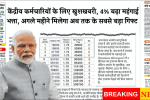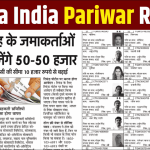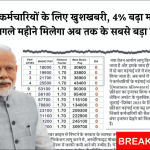
Banks across India have made significant strides in meeting the Reserve Bank of India’s mandate to enhance the availability of low-denomination currency through ATMs. With the June 30 deadline approaching, 73% of ATMs nationwide are now configured to dispense ₹100 or ₹200 notes from at least one cassette, representing a substantial improvement in the country’s cash distribution infrastructure.
This milestone reflects the banking sector’s commitment to addressing the everyday transactional needs of millions of Indians who continue to rely heavily on cash for their daily purchases. The progress becomes even more significant when viewed against the backdrop of India’s evolving payment landscape and the persistent demand for smaller denomination notes.
Steady Progress Toward Compliance
According to data from CMS Info Systems, India’s largest cash management company that operates 73,000 of the nation’s 215,000 ATMs, the current 73% compliance rate marks a notable increase from 65% recorded in December 2024. This steady improvement demonstrates the banking industry’s systematic approach to implementing the RBI’s directive.
“With 60% of consumer expenditure still anchored in cash, enabling availability of ₹100 and ₹200 notes directly addresses day-to-day transactional needs, especially in semi-urban and rural markets,” explained Anush Raghavan, president of cash management at CMS Info Systems. This statement underscores the critical role that accessible low-denomination currency plays in India’s economy, particularly in areas where digital payment adoption remains limited.
RBI’s Phased Implementation Strategy
The Reserve Bank of India’s approach to this mandate reflects a carefully planned strategy designed to ensure smooth implementation across the banking sector. In a circular issued at the end of April 2025, the central bank established clear, staggered compliance targets that allow banks sufficient time to upgrade their ATM infrastructure.
Compliance Timeline
| Deadline | Compliance Target | Requirement |
|---|---|---|
| June 30, 2025 | Initial milestone | Banks must begin implementation |
| September 30, 2025 | 75% of ATMs | Must dispense ₹100 or ₹200 notes from at least one cassette |
| March 31, 2026 | 90% of ATMs | Must dispense ₹100 or ₹200 notes from at least one cassette |
This graduated approach allows banks to systematically upgrade their ATM networks while maintaining service continuity for customers. The timeline also provides adequate preparation time for cash management companies and banks to coordinate the necessary infrastructure changes.
Impact on Daily Transactions
The availability of smaller denomination notes through ATMs addresses a long-standing challenge faced by consumers across India. Previously, many ATMs primarily dispensed ₹500 and ₹2,000 notes, creating difficulties for users who needed smaller denominations for routine transactions such as local transportation, street food purchases, or small retail transactions.
The shift toward dispensing ₹100 and ₹200 notes is particularly beneficial for:
- Daily wage workers who prefer smaller denominations
- Small business owners who need change for customer transactions
- Rural and semi-urban populations where digital payment infrastructure is still developing
- Elderly customers who are more comfortable with cash transactions
Revised ATM Fee Structure
Coinciding with these infrastructure improvements, the RBI has also updated the ATM interchange fee structure, which took effect from May 1, 2025. These changes will impact the cost structure of ATM operations and, consequently, the fees charged to customers for certain transactions.
Updated Fee Structure
| Transaction Type | Previous Fee | New Fee | Increase |
|---|---|---|---|
| Cash Withdrawals | ₹17 per transaction | ₹19 per transaction | ₹2 (11.8%) |
| Non-financial Transactions | ₹6 per transaction | ₹7 per transaction | ₹1 (16.7%) |
These fee adjustments primarily affect customers who exceed their monthly quota of free transactions. The interchange fee represents the charge paid by one bank to another for processing ATM transactions, costs that are typically passed on to customers after their free transaction limit is exhausted.
Free Transaction Policy Framework
The RBI maintains a differentiated approach to free ATM transactions based on geographical location, recognizing the varying levels of banking infrastructure across different regions of the country.
Monthly Free Transaction Limits
| Location Type | Cities Included | Free Transactions per Month |
|---|---|---|
| Metro Cities | Mumbai, Delhi, Chennai, Kolkata, Bengaluru, Hyderabad | 3 transactions |
| Non-Metro Areas | All other cities and towns | 5 transactions |
This policy framework ensures that customers in smaller towns and rural areas, where banking infrastructure may be less dense, receive additional free transactions to meet their banking needs. The RBI has also implemented customer protection measures, ensuring that transaction failures due to technical issues such as communication errors or insufficient cash do not count against the free transaction limit.
Industry Response and Future Outlook
The banking industry’s response to the RBI mandate has been largely positive, with most institutions recognizing the importance of improving cash accessibility for their customers. The current 73% compliance rate, achieved well ahead of the initial targets, demonstrates the sector’s ability to adapt to regulatory requirements efficiently.
Cash management companies have played a crucial role in this transition, working closely with banks to reconfigure ATM cassettes and ensure adequate supply chains for smaller denomination notes. The success of this initiative may pave the way for additional improvements in India’s cash distribution network.
As India continues its journey toward digital payments, the availability of appropriate cash denominations remains crucial for ensuring financial inclusion across all segments of society. The RBI’s mandate strikes a balance between promoting digital transactions and recognizing the ongoing importance of cash in the Indian economy.
The achievement of 73% compliance ahead of schedule positions the banking sector well to meet the more stringent targets set for September 2025 and March 2026, ultimately benefiting millions of customers who rely on ATMs for their daily banking needs.
Quick FAQs
Q: What percentage of ATMs currently dispense ₹100 or ₹200 notes?
A: 73% of ATMs now dispense ₹100 or ₹200 notes from at least one cassette.
Q: When is the final compliance deadline for the RBI mandate?
A: Banks must ensure 90% of ATMs dispense smaller denominations by March 31, 2026.
Q: How much do ATM withdrawal fees cost after the free limit?
A: Cash withdrawals cost ₹19 per transaction (increased from ₹17) after exceeding free limits.
Q: How many free ATM transactions are allowed per month?
A: Metro cities get 3 free transactions, while non-metro areas get 5 free transactions monthly.














4wpm1n